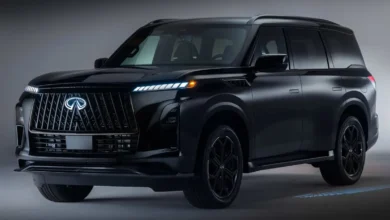The Best BMW M2 Might Be the One with a Four-Cylinder Engine: Here’s Why

BMW M2 is widely loved for its compact proportions, rear-wheel-drive thrills, and the heart of a true performance machine. Traditionally, it’s been the home of six-cylinder muscle and track-ready dynamics. But in a surprising twist, BMW Motorsport has revealed a new M2 variant that ditches the classic six-cylinder for a turbocharged four-cylinder engine.
Sounds like heresy? Maybe not. In fact, this lighter, more accessible M2 might just be the most well-rounded version yet—especially for racers and driving purists.
The Shift from Six to Four Cylinders: What’s Going On?
The traditional BMW M2 is powered by a 3.0-liter twin-turbo inline-six (the S58 engine), which has its roots in the M3 and M4. It’s aggressive, powerful, and gives the M2 its signature sound and forceful personality. However, the recently disclosed M2 Racing variant completely changes the equation.
This new model swaps the S58 for a smaller 2.0-liter B48 inline-four engine—the same family of engines used in many BMW road cars like the 330i. That change might seem like a downgrade, but it’s a smart move when you consider the M2 Racing’s real purpose: competitive customer motorsport.
Designed for the Track, Not the Showroom

The M2 Racing is not a street car—it’s built specifically for entry-level racing. BMW’s decision to go with a four-cylinder engine was based on cost, weight, and competitive flexibility.
Racing vehicles often need regular repairs, engine replacements, and lighter weight for optimal handling. A smaller engine means less complexity and lower costs for private racing teams. It also means better eligibility for certain racing classes that limit displacement or restrict turbocharging levels.
Weight Reduction Equals Better Agility
The new four-cylinder M2 Racing weighs around 1,498 kg—making it nearly 226 kg lighter than the standard road-going M2. That reduction in weight isn’t just a number; it transforms how the car handles, brakes, and accelerates.
In racing, every kilogram matters. Less mass allows the car to change direction more quickly, reduce tire wear, and operate more efficiently across long-distance events like endurance races.
Power Figures: Does It Still Deliver?
A respectable 308 to 313 horsepower and up to 420 Nm of torque are produced by the four-cylinder B48 engine that is found in the M2 Racing, despite the fact that it is a smaller engine configuration. That’s not far off from the older six-cylinder M2 Competition, which made around 405 horsepower.
But it’s not just about raw horsepower. In race applications, consistency, reliability, and ease of maintenance matter more than sheer power. The B48 achieves a balance that makes the car both competitive and cost-effective.
Transmission and Racing Setup

BMW equips the M2 Racing with a 7-speed ZF automatic racing gearbox and a mechanical limited-slip differential. It also comes with full racing suspension, lightweight body panels, a roll cage, and aerodynamic enhancements designed for real-world circuits.
The focus here is clear: this is a purpose-built machine that offers professional-grade performance without the massive expense of GT-class cars.
Strategic Flexibility in Racing Series
One of the biggest benefits of using a four-cylinder engine is that it allows the M2 Racing to be eligible for more racing series. The car can participate in competitions like the 24H Series, Dutch Supercar Challenge, and other grassroots or amateur-level events.
For BMW, this is a smart move. It invites more customer teams to race with the brand, strengthens its motorsport presence, and broadens access to younger or budget-conscious racers.
Also Read: Volkswagen GTI Edition 50: Celebrating Half a Century of Hot Hatch Heritage
Comparing with the Street M2: Which Is Better?
The four-cylinder M2 makes a lot of sense when seen from the perspective of sports racing. But for most enthusiasts, the street-legal M2 is still the dream. With its muscular S58 engine pushing 453 to 473 horsepower (depending on the model year and market), the standard M2 delivers an old-school driving experience with modern performance.
You can even get it with a six-speed manual gearbox—a rarity in today’s automatic-heavy sports car segment. That alone makes it a gem for driving purists.
What This Means for Enthusiasts and the Brand

The decision made by BMW to launch a four-cylinder M2 Racing demonstrates the brand’s dedication to creating a diverse lineup of motorsports vehicles. It’s not just about producing the fastest or loudest car. It’s about giving people the tools to race affordably, maintain vehicles easily, and grow motorsport from the grassroots level up.
This could also foreshadow how the brand handles performance in a future where downsizing and electrification are increasingly dominant themes.
Could We See a Four-Cylinder Road M2?
At this time, there’s no sign that BMW will introduce a four-cylinder road version of the M2. The current generation is firmly rooted in its six-cylinder identity, and that’s likely to remain for as long as internal combustion M cars exist.
However, the brand’s recent electric and hybrid developments do raise interesting questions. Could we one day see a lighter, hybrid-assisted M2 with a four-cylinder base engine? It’s possible, especially as emissions regulations tighten around the world.
Final Thoughts: The Four-Cylinder M2 Is a Track Hero
While traditionalists might balk at the idea of an M2 without six cylinders, the four-cylinder M2 Racing is a brilliant example of form following function. It’s fast, affordable (relatively speaking), and opens the door for more racing enthusiasts to experience BMW Motorsport.
For the street? Stick with the inline-six for now. But if you’re heading to the track and need a reliable, lightweight, and cost-effective race car, the four-cylinder M2 might just be the best M2 ever made.








3 Comments